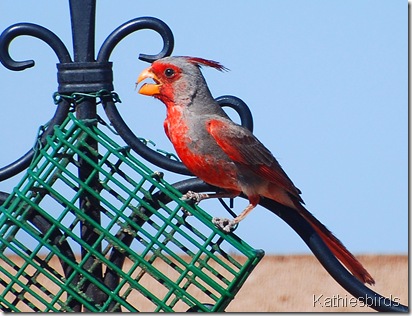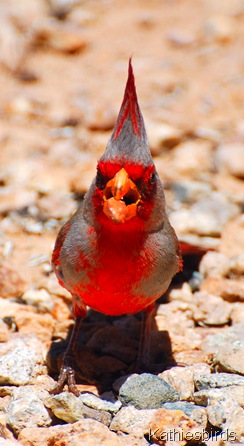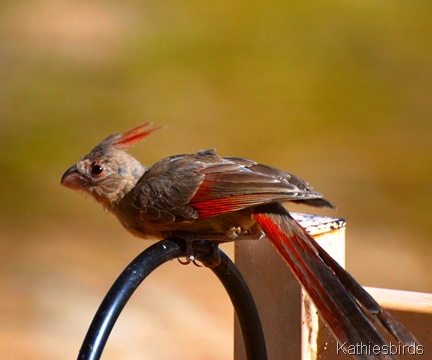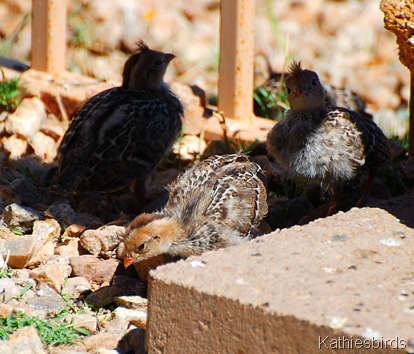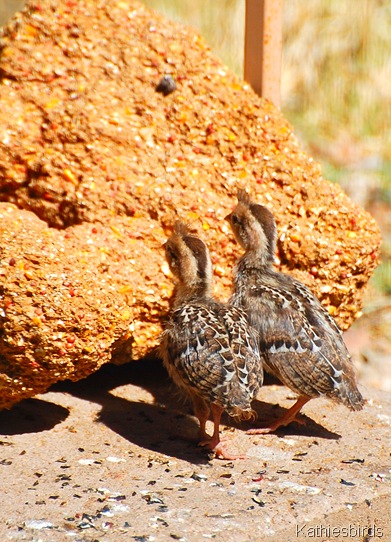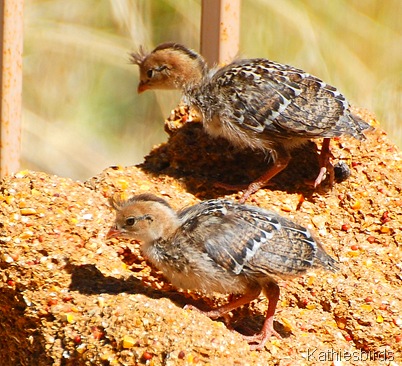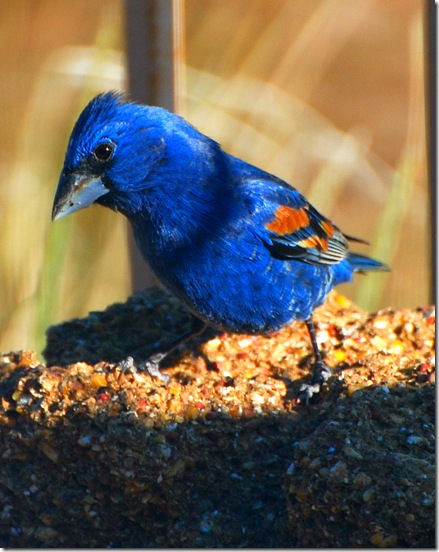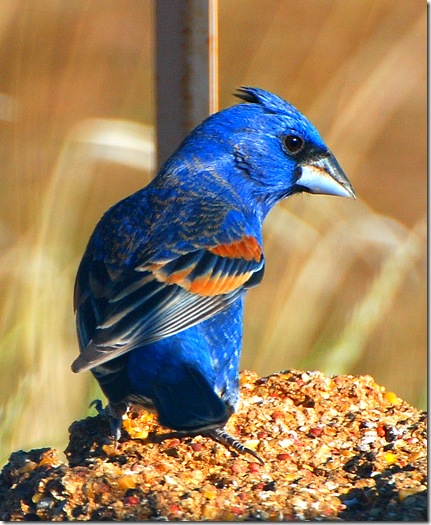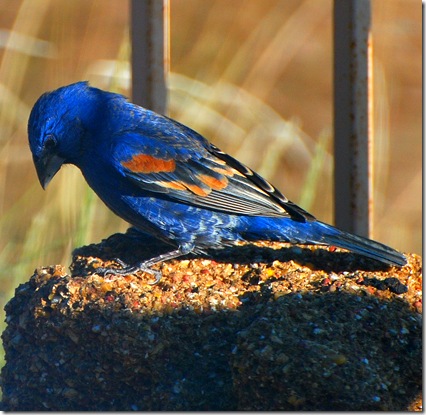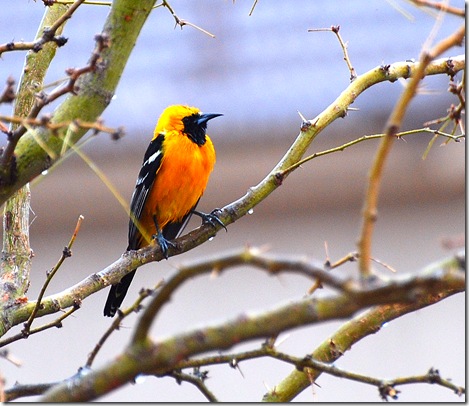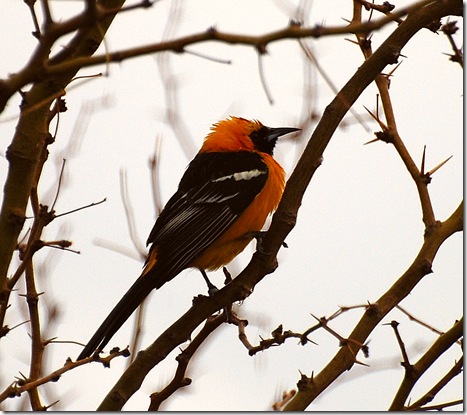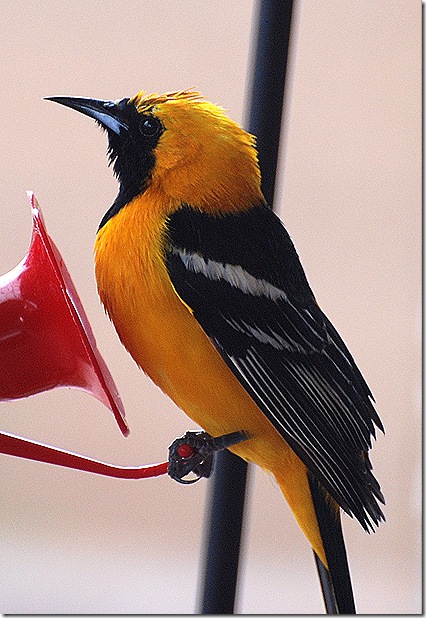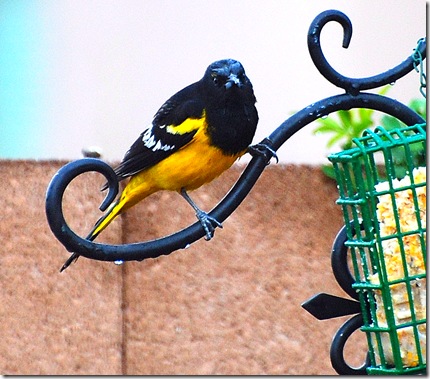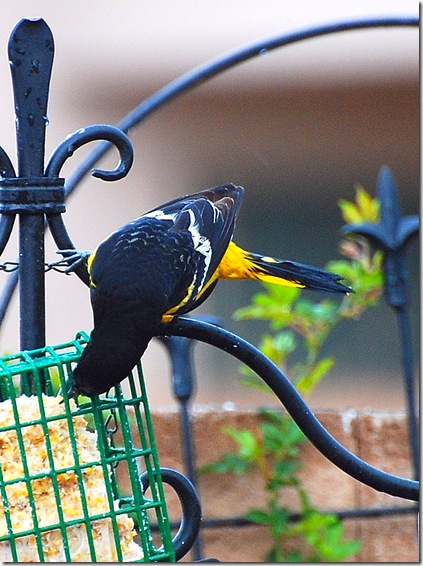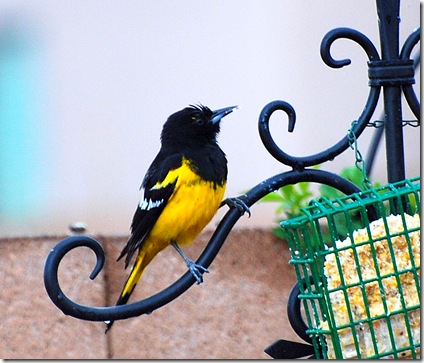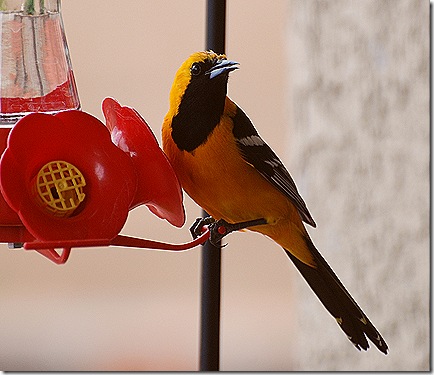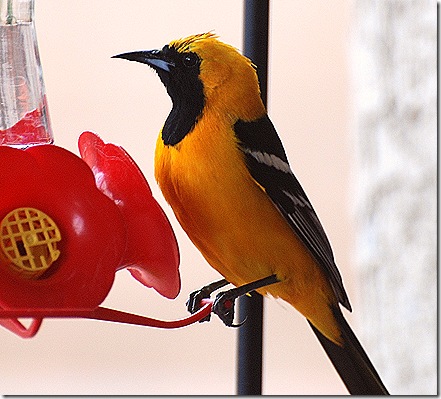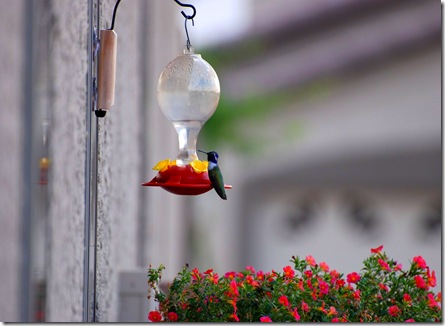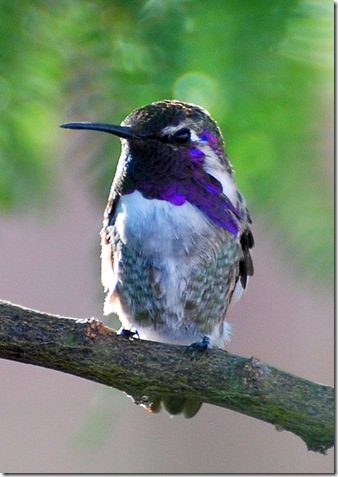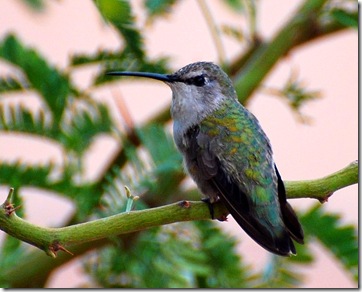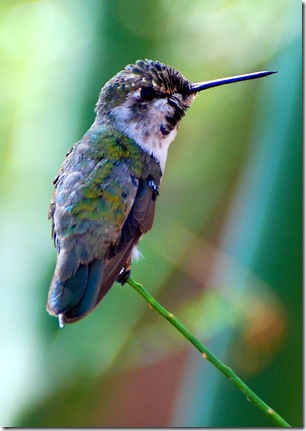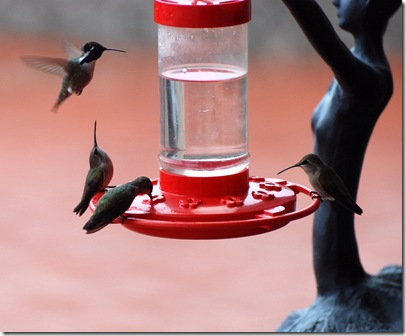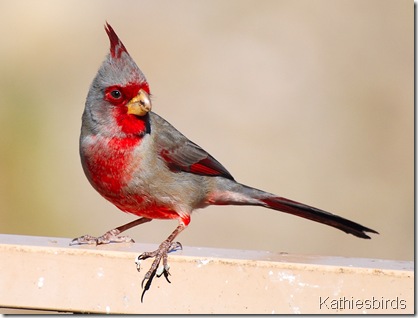 Pyrrhuloxia Cardinalis sinuatus 1-29-09
Pyrrhuloxia Cardinalis sinuatus 1-29-09
Pyrrhuloxias, also know as Mexican Cardinals, are seen in Sycamore Canyon year round. They are distinguished from the similar looking Northern Cardinals by their gray coloration and stubby yellow parrot-like beaks.
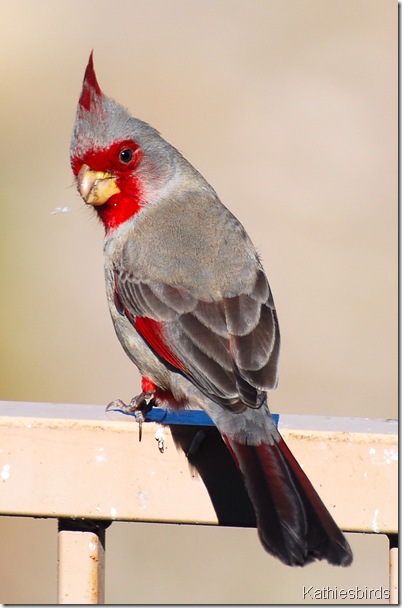 The Male Pyrrhuloxia has red around its beak and eyes as well as a red crest and red running down the belly. The female is almost all gray with little to no red except in the crest, wings, and tail feathers. She also has a stubby yellow beak while Northern Cardinals have a red cone-shaped beak. The female cardinal is over-all brown and not gray. Female pyrrhuloxias are very shy and often only come to my feeders at dusk and dawn.
The Male Pyrrhuloxia has red around its beak and eyes as well as a red crest and red running down the belly. The female is almost all gray with little to no red except in the crest, wings, and tail feathers. She also has a stubby yellow beak while Northern Cardinals have a red cone-shaped beak. The female cardinal is over-all brown and not gray. Female pyrrhuloxias are very shy and often only come to my feeders at dusk and dawn.
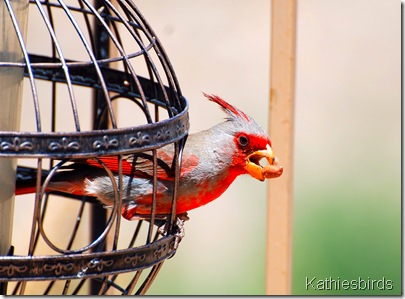 Like their Northern counterparts, Pyrrhuloxias are seed eaters. They love peanuts and sunflower seed and will also come to suet in the winter time.
Like their Northern counterparts, Pyrrhuloxias are seed eaters. They love peanuts and sunflower seed and will also come to suet in the winter time.
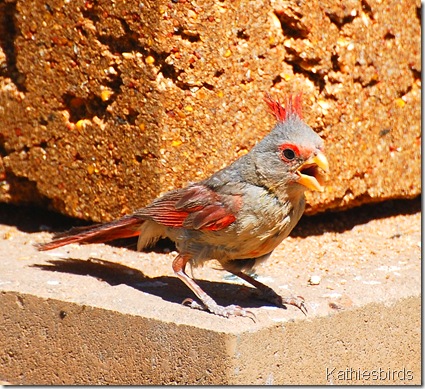 This juvenile male is already starting to get the red around its eyes and on its wings. Though still downy, you can see the beginning of the red on its belly. It already has the yellow beak of an adult.
This juvenile male is already starting to get the red around its eyes and on its wings. Though still downy, you can see the beginning of the red on its belly. It already has the yellow beak of an adult.
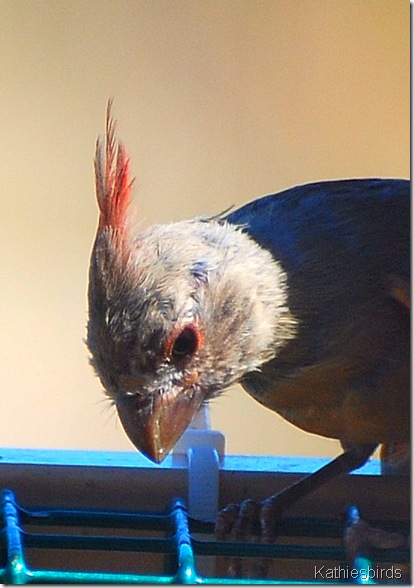 However, this juvenile (7-20-10) still has the gray beak of a nestling. However, you can still see that distinctive stubby beak shape.
However, this juvenile (7-20-10) still has the gray beak of a nestling. However, you can still see that distinctive stubby beak shape.
Juvenile Pyrrhuloxia 7-5-10
When seen from the front the pyrrhuloxia takes on a comical, cone-shaped silhouette. This picture was taken May 16, 2008 in my own yard on Vermillion Sunset Dr.
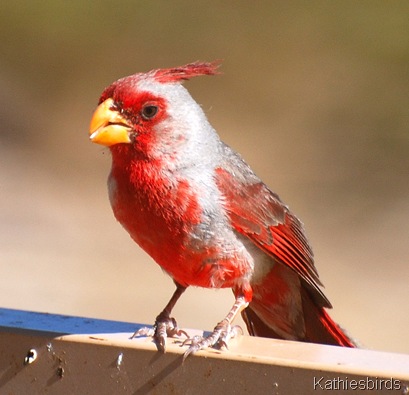 However, they can relax their crests and often do. 7-5-10
However, they can relax their crests and often do. 7-5-10
| Pyrrhuloxia sightings in | My Yard (1st sighting of each month only |
| Vermillion Sunset Dr | July 18, 2007 |
| January 31, 2008 | |
| February 15, 2008 | |
| May 1, 2008 | |
| June 25, 2008 | |
| October 4, 2008 | |
| November 27, 2008 | |
| January 29, 2009 | |
| March 3, 2009 | |
| April 1, 2009 | |
| June 10, 2009 | |
| September 19, 2009 | |
| November 9, 2009 | |
| December 5, 2009 | |
| January 1, 2010 | |
| February 13, 2010 | |
| April 1, 2010 | |
| June 21, 2010 | |
| July 1, 2010 |
| Pyrrhuloxia sightings in | Sycamore Canyon |
| Location: | Date: |
| Harrison Rd | May 3, 2007 |
| March 18, 2008 | |
| February 13, 2010 | |
| Sienna Bluffs Trail | February 24, 2009 |
| March 6, 2009 | |
| June 11, 2009 | |
| March 3, 2010 | |
| May 20, 2010 | |
| July 14, 2010 | |
| Sycamore Canyon Neighborhood Streets* | March 4, 2009 June 11, 2009 |
| Sycamore Canyon Park | August 4, 2009 |
| September 4, 2009 | |
| February 12, 2010 | |
| June 30, 2010 | |
| Azure sky Trail | January 27, 2009 |
*I have defined this area as the junction of Rustling Leaf Trail and Sycamore Leaf in all directions for about 1/4 to 1/2 mile.
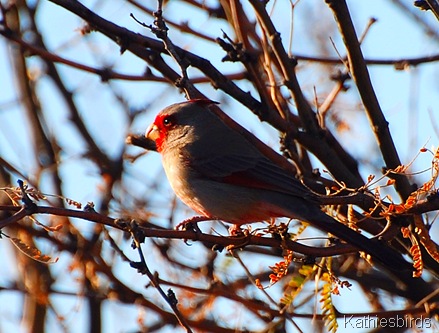 Adult Male Pyrrhuloxia in Sycamore Canyon Wash 2-16-09
Adult Male Pyrrhuloxia in Sycamore Canyon Wash 2-16-09
| Location: | Date Seen: |
| Sycamore Canyon Wash | April 15, 2008 |
| April 23, 2008 | |
| May 10, 2008 | |
| June 14, 2008 | |
| January 29, 2009 | |
| February 16, 2009 | |
| March 24, 2009 | |
| July 29, 2009 | |
| September 25, 2009 | |
| December 27, 2009 | |
| March 4, 2010 | |
| April 13, 2010 |
As you can see, Pyrrhuloxias can be seen practically anywhere in Sycamore Canyon at anytime of year. All data for these sightings comes from my eBird record with the Cornell Lab of Ornithology.
